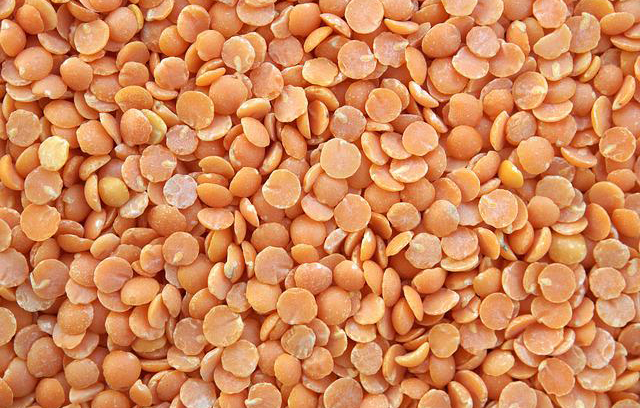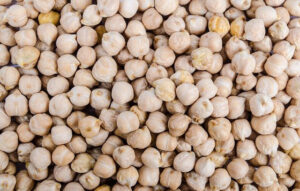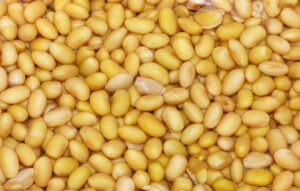GrainProTrade – Lentils wholesale at producer prices
For GrainProTrade deals with wholesale and sale of all kinds of lentils, as well as all other agricultural crops from Ukraine, Kazakhstan, Moldova and other countries. Ready to arrange delivery to the specified address is a convenient way for you, with the preparation of the package of accompanying documents that ensure the safety of the cargo, hassle-free and its consequences throughout the route.
The main advantages of the ZusaWorking with our company:
- the high level of professionalism of our entire team, which ensures problem-free collection and delivery of quality raw materials in the shortest possible time;
- a reasonable price level, since we work directly with lens producers across the country, e.gusamen work;
- possibility of various payment methods and convenient delivery, the method of which you choose yourself, even after consultation with our manager;
- completion of collective orders of any complexity.
- Contact our managers on the website or by phone. We offer high quality products at an optimal price.
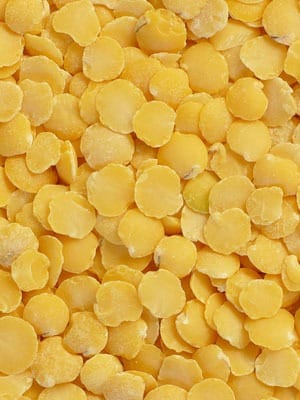
Yellow lentils

Red lentils

Green lentils

Green lentils
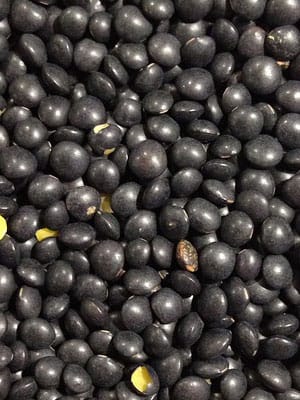
Black Lentils
All About Lenses
Lentil (lat. lens) is a herbaceous plant of the legume family, which includes several different species that grow in the Mediterranean, in Asia Minor and Central, in the Caucasus and Transcaucasia. Only one type is known in agriculture: lentils are food safe. This legume is very unpretentious, resistant to drought, it is used in many countries as a fodder crop and as a useful food product.
Lentils became known to man long before the advent of other legumes. It was grown in ancient Egypt, India and the countries of western Asia; it is mentioned in many ancient manuscripts, including the Old Testament.
Due to their unpretentiousness, lentils often saved entire areas from starvation during the drought and harvest season. It was used to make flour and bake bread, boil chowder, make sausages and even sweets. Lentils taste very similar to beans and peas, but they cook 4 times faster, give a larger harvest, which depends little on weather conditions.
In their nutritional value, lentils can be more caloric than other legumes - peas and beans. It depends on the species, the calorie content of some varieties reaches about 300 kCal per 100 grams. The ZusaComposition of lentils includes: carbohydrates, proteins and fats, fiber, saturated fat, fiber, starch and natural sugars. Vitamins E, B and PP, carotene, a whole group of minerals — phosphorus, calcium, potassium, copper, boron, nickel, chromium, iodine, fluorine, zinc, manganese, molybdenum. Lentils are rich in iron, so eating them regularly improves blood countusametabolism and increases hemoglobin. Sprouted grains contain large amounts of vitamin C. A cooked serving of lentils contains a daily norm of folic acid.
There are different types of lenses:
– Brown is the most common variety. Most often, brown lentils are used to make soups, as their grains are well-cooked but hold their shape well. It is recommended to soak this variety for 20-30 minutes before cooking.
– Green – used in the preparation of diet salads and side dishes. Requires no soaking before cooking.
– Red is a peeled variety, ie without the top shell, is prepared more quickly than other varieties.
– Black (Beluga) is the rarest type of lentil. When cooking, it changes color in light, but does not lose shape, which allows you to use them as a side dish.
– Yellow – looks like peas. This variety is considered versatile and is used in many dishes.
Each variety of lentils has some substances in greater, but to a lesser extent, some substances in certain varieties are absent altogether. Despite this, lentils have the nutrients most necessary for the human body and they are all in bioactive form, which means they are absorbed better and faster.
Lentils are an annual plant. The main root is up to 1 m long, with a large number of side roots and roots. The stem is erect or semi-erect, low (10-50 cm or more), tetrahedral, formidable, profusely branching, tinged with anthocyanin at the base or uncolored—green. Petiole, regular, complex, parnoperating (2-8 pairs of leaves), ending with a mustache, the leaves are whole-circular, oval or linear, small. The stipules are semi-copied, whole-circle. The stem has one to four flowers and ends in a point.
The flower is irregularly shaped and consists of 5 petals. The flowers are small (5-8 mm long), of different colors (white, pink, purple-blue, more often white with lilac-blue veins on the sail). The cup has five parts. Stamens 10.
The fruit bean is unilateral, bilobed, flattened or slightly convex, close to rhombic shape, 1-3 seed-like, is encapsulated with a beak. The seeds are flattened (flat) or convex (almost spherical), large or small (diameter 2-9 mm). Their color is diverse: yellow, green, white, brown, black. The seed coat is monochromatic or has a pattern. The seedlings are yellow, green, orange. The seed edge is linear. The weight of 1000 seeds ranges from 10 to 99 g.
The length of the growing season for zoned lentil varieties averages 75-95 days. Depending on the weather conditions, it ranges from 75 to 110 days or longer.
The lentil seeds begin to germinate at a temperature of 3-4 °C. It easily tolerates spring frosts. In the experimental station, in the 63 years of its existence, the death of lentil plants by frost has never been observed, which in a few years reached -8-12,6 °C. It was there that the difference between the types of lentils in terms of their frost resistance was also noted.
Lentils are a medium tolerant crop. It tolerates dry soil before flowering worse than during the flowering period — ripening. Prolonged drought during seed filling and ripening drastically reduces harvest. Large lentils are more sensitive to dryness and drought than small lentils. Lentil plants respond to rainfall after a drought, they begin to bloom again, produce fruit as sometimes the detrimental effect of the drought is smoothed out. With excess moisture, the growing season increases dramatically, ripening is delayed.
Lentils have an extended and long flowering period, about 1/2-2/3 of the growing season. The maximum formation of flowers coincides with the period of intensive plant growth, e.gusammen, and they form on the lateral branches almost until the end of the growing season. Inside the plant, flowering usually begins on the lower branches and gradually spreads upwards. On a separate branch, the lower flowers begin to bloom, followed by the middle and upper flowers. In the inflorescence (brush), the lower flower blooms first. A separate branch blooms for 9-15 days.
The first flowers open early - at 4-5 in the morning, their main number blooms in 8-10 hours, during the second half of the day only a single bloom is observed. The flower blooms one day, but in dry weather it fades for 10-12 hours, and in rainy blooming it is delayed for 2-3 days. The stalk and anthers ripen very early – in the colored bud phase. Pollination has already taken place in the blossoming flowers. The pollen is light yellow in color.
Lentils are a self-pollinating plant. As early as the XNUMXs, it was considered a strict self-pollinator. The possibility of natural hybridization was allowed only in rare cases in dry and hot climates. However, observations revealed that even in temperate climates there is annual cross-pollination with the help of insects that visit lentils in large numbers during flowering.
Lentils are most demanding on moisture during the seed swelling and germination period. In the subsequent stages of development, it tolerates drought better than peas. Particularly drought-tolerant small seed forms of lentils are more drought tolerant. It succeeds well in areas with unstable humidification. Lentils can be grown without irrigation in regions with annual rainfall over 300mm.
Lentils are a plant of a long day. The entire growing season is 80 to 110 days. The optimal temperatures during the vegetative growth period are 12-16 degrees, during the seed filling phase 22-25 degrees. It is characterized by greater thermophilicity than peas.
A wide range of soil types are suitable for growing lentils. They grow well on calcareous, slightly warmed soils, loamy, loamy soils with a good air regime. It also grows well on rocky soils with a shallow arable horizon. It grows poorly on sandy, heavy loam, muddy, swampy and saline. It shows up well in soil with a pH of 6,5 to 7,5.
The best precursors for lentils are winter cereals. If necessary, it is possible to put it on spring wheat, which has been treated with herbicides and is on a layer of perennial grasses.
The worst progenitor for lentils is sunflower, undesirable is corn. Since after the sunflower there is a carrion that drowns out the shoots of the lentils, and the corn leaves a large number of crop residues that do not allow the seeds to be evenly sealed.
It is not recommended to sow lentils on lentils and return to their original place earlier than in 4-5 years. It should not be on other legumes, including Legumes, are laid, as they have common diseases and pests.
Since lentils can accumulate a significant amount of nitrogen, it itself is an excellent precursor for other crops.
The main direction of basic tillage is the creation of a loose layer and maximum cleaning of weeds. In traditional processing, the main treatment begins with peeling the stubble. Finch plowing is carried out at 25-27 cm. In the fall, 1-2 cultivations are carried out. Pre-sowing treatment is carried out in the spring after the moisture has been closed by harrowing to the depth of sowing.
Before sowing, the soil should be leveled, therefore, before and after sowing, rolling is carried out with ring-shaped or spur rollers.
For lentils, early sowing times are preferable, in this case it effectively uses winter moisture. Lentils can be easily frozen down to -5 … -6 °C. Be guided by the degree of soil heating - on average, the soil temperature for sowing should not exceed 5 °C. Therefore, the sowing times of the lentils usually go at the same time or after the sowing of spring grains.
Seed germination begins at 3-4 °C (in the south of Russia this period occurs around the beginning of April), but friendly shoots appear when the top layer of soil is warmed to 8-10 °C. It is preferable to use early ripening varieties.
Depending on the size of the seeds, the sowing rate is 1,5 million plants per hectare (for large varieties), 2,2 to 2,5 million hectares (for small varieties).
The lentils are sown in the normal way with a row spacing of 15-20 cm. The optimal sowing depth is 4-6 cm, and when drying the top layer of soil, the soil is rolled with sowing rollers at an angle of 20 °C – 30 °C in relation to the direction of sowing in order to level the field as much as possible. Compaction encourages better utilization of moisture from the lower layers of soil by seeds.
Up to 85% of the nitrogen requirement is met by lentils by fixing them with nitrogen from the air, under optimal conditions for the activity of tubers. The worse the conditions for growing lentils, the more effective is the introduction of an initial dose of nitrogen at the rate of 20-60 kg N / ha. When fertilizing during sowing, care must be taken that the pellets do not come into contact with the seeds, otherwise the sprouts die off.
Potassium and phosphorus are introduced based on the agrochemical analysis of the soil.
Lentils are sensitive to a lack of sulfur, iron and zinc. Boron and manganese may not be available on soils with a strong alkaline reaction. In the budding period, complex fertilizers with trace elements can be used.
Lentils are not competitive against weeds due to the low leaf mass. It is important to protect it from clogging. The critical period is 6-8 weeks after germination. It is especially dangerous to clog peas with mouse, since the impurities of pea seeds greatly reduce the flavor of the lentils and are difficult to separate from their kernels when cleaning. If necessary, promethrin-based herbicides are used before germination.
It is important to ensure that the plants are protected from weevils, for this seed treatment is carried out with an insecticide. If necessary, treatments against the meadow moth and grain are carried out. It is necessary to fight insects before flowering begins.
Lentils ripen unevenly, in addition, they are attached low from the soil surface, which complicates the mechanization of harvesting.
Tall lentil varieties are mowed into rolls when drilling 50 to 60% beans with mowers and harvesters converted to low cut. The beveled mass is dried in rolls for 2-4 days, and then threshed with self-propelled combines with pick-up trucks. It should be borne in mind that in 1-2 days it will be necessary to pick up the dried mass and thresh it.
Low-growing lentils are removed directly by harvesting when 80-90% of the beans are browned.
It is recommended to dry the plants, since unripe lentils are poorly fertilized, and when they stop, they crumble.
Lentil grain is used in the food industry for the production of protein preparations, sausages, preserves, confectionery (some varieties of chocolate, candy, biscuits). The seeds have a high flavor. In food, they are consumed fresh and canned. The protein content is 24-30%, they are superior to peas, chickpeas and beans in digestibility, fats — 1,4%, carbohydrates — 52%, minerals — 3,2%.
Large lentil molds are mainly used for food purposes, small seeds are used in animal feed.
Straw and lentils are used for fodder. The protein content in the straw is up to 14-15%, the nutritional value is equivalent to a good meadow hay, in the soil up to 18-20%, which exceeds the grain of oats and rye bran. 1 kg of half lentils contains 0,56 food units. Ground seeds are also used for fodder, which are good concentrated fodder for all farm animals.

